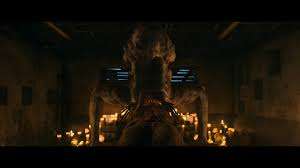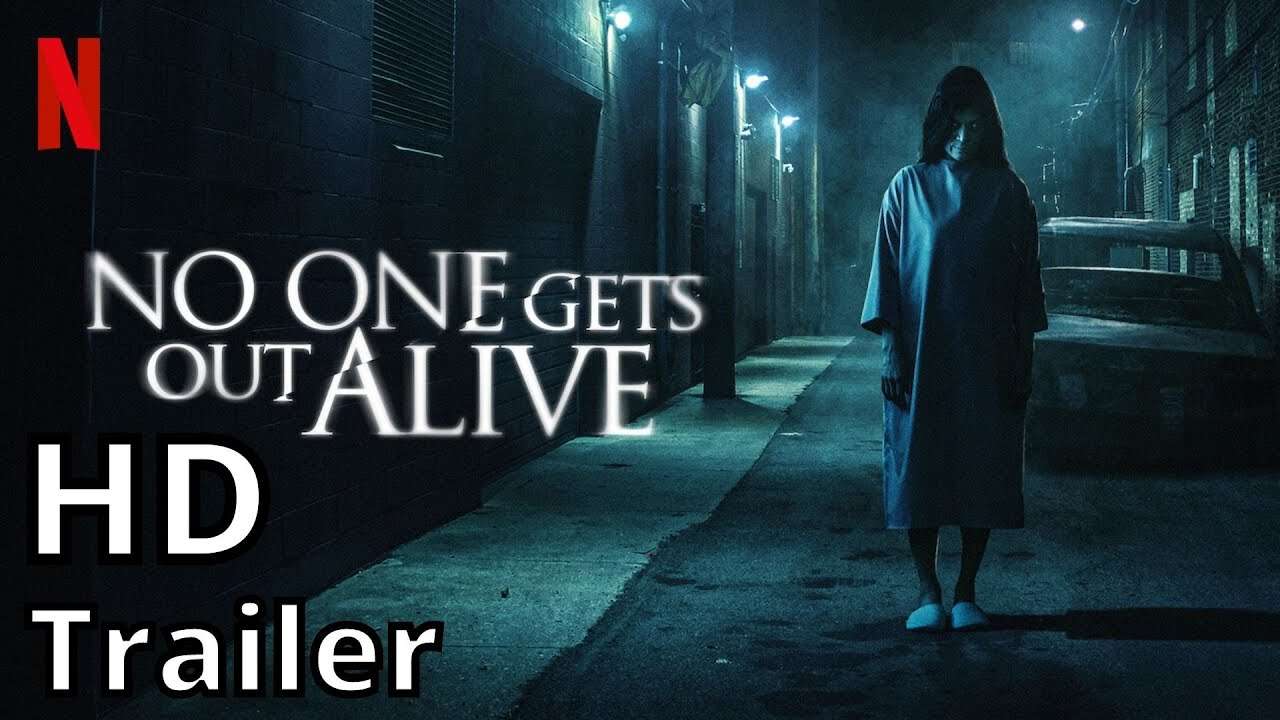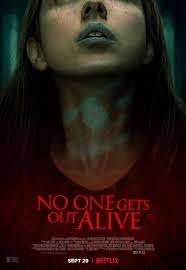Netflix’s No One Gets Out Alive (2021) is a slow-burning, psychological horror that blurs the lines between supernatural terror and real-world dread. Based on Adam Nevill’s 2014 novel and adapted for the screen by Jon Croker and Fernanda Coppel, the film tackles themes of immigration, trauma, exploitation, and feminine suffering—while also delivering spine-chilling sequences of haunted house horror.
Though it doesn’t reinvent the genre, No One Gets Out Alive stands out for its unique perspective, oppressive atmosphere, and unsettling finale that leaves more questions than answers.
Plot Summary: A Ghost Story with Social Commentary
Set in a decaying boarding house in Cleveland, Ohio, the film follows Ambar (Cristina Rodlo), an undocumented Mexican immigrant who is trying to find stability after the death of her mother. She’s recently moved to the U.S. and has no choice but to take a low-paying factory job under exploitative conditions. With little money, no friends, and no papers, Ambar is vulnerable—and soon finds herself renting a cheap room in a massive, crumbling Victorian house run by the mysterious Red (Marc Menchaca) and his unsettling brother Becker (David Figlioli).
Almost immediately, strange things begin to happen. Ambar hears whispers, sees ghostly visions of women, and is haunted by unsettling dreams involving her mother. As the film progresses, the house seems to feed off her grief and fear. But what starts as a haunted house narrative soon morphs into something much darker—an ancient evil lurking behind the decaying walls, tied to a monstrous box and ritualistic sacrifice.

This is a horror story, yes—but it’s also a metaphor for the exploitation of the marginalized. The real horror may not be the ghosts, but the systems that trap women like Ambar in perpetual vulnerability.
Performance: Cristina Rodlo Carries the Film
Cristina Rodlo gives a compelling, grounded performance as Ambar. She captures both the physical and emotional exhaustion of her character—always alert, anxious, and never safe. It’s a subtle performance that avoids melodrama but still carries weight in the film’s more emotional and frightening moments.
Rodlo convincingly portrays a woman cornered by her circumstances: mourning her mother, denied legal status, underpaid, and at the mercy of strangers. Her descent into the haunted house’s web of horror feels tragic yet inevitable. She doesn’t scream her way through the movie—she endures.
Marc Menchaca (Ozark, The Outsider) is excellent as Red, toeing the line between pity and menace. His character is soft-spoken and haunted himself, making him more complex than a standard villain. His brother Becker, in contrast, is pure intimidation—largely silent but terrifying whenever on screen.
Atmosphere and Direction: Bleak and Oppressive

Director Santiago Menghini crafts a deeply unsettling atmosphere, focusing on claustrophobic interiors, long silences, and slowly mounting dread. The boarding house itself is a character—moody, decaying, filled with ominous shadows and unexplained noises. Every creaking floorboard and flickering light adds to the tension.
The film’s use of silence and sound is particularly effective. Rather than relying on jump scares, No One Gets Out Alive prefers to make you squirm in your seat. When it does break into horror sequences, it does so with sudden violence or disturbing imagery.
One standout sequence involves a dreamlike collapse of reality—walls bend, voices echo, and Ambar loses track of what’s real. These surreal, Lynchian moments are some of the most unsettling in the film.
Themes: Immigration, Exploitation, and the Monster Within
What elevates No One Gets Out Alive beyond its haunted house trappings is its thematic depth. At its core, the film is about how society preys upon the powerless—particularly undocumented immigrants and women.
Ambar’s situation is terrifying even before the supernatural element enters. She is paid under the table, ignored by authorities, refused medical care, and constantly forced to compromise her dignity just to survive. The house is a metaphor for the “American Dream” turned nightmare—a decaying promise filled with ghosts of those who came before and suffered in silence.
The horror becomes literal with the presence of a grotesque box in the basement—hinted to be of Aztec origin—that demands blood sacrifices. It’s an ancient force of suffering and death, feeding on women’s pain. The ritualistic sacrifices parallel how society consumes the lives of the marginalized for the benefit of the few.
In this way, the film becomes not just a ghost story, but a quiet political statement.
Visual Effects and the Monster Design
Though largely restrained, the film’s final act introduces a fully supernatural creature that is visually striking and unsettling. The design of the monster—clearly inspired by Mesoamerican mythology—is both alien and mythic. It is not over-explained, which makes it more terrifying. Some viewers may find the abrupt shift into overt creature horror jarring, but it fits the film’s descent into a deeper layer of nightmare.
The effects are well-executed for a Netflix budget, especially given that the film keeps the creature hidden for most of its runtime. When it does appear, it leaves a lasting impression.
Pacing and Structure

At just under 90 minutes, the film moves briskly, but some may find the first act slow. It spends a lot of time building mood and placing Ambar’s character in context. However, once the horror elements take center stage, the pace quickens considerably.
The final act is intense and violent—but it’s also morally ambiguous. Without spoiling the ending, Ambar is forced to make a decision that flips the entire film’s perspective. The final scene is haunting, not for its horror, but for what it says about survival in a world stacked against you.
Flaws and Limitations
While No One Gets Out Alive is powerful in concept and mood, it does suffer from underdeveloped side characters. The villains, though intriguing, aren’t fully explored, and the mythology behind the box is barely explained. Some may find the lack of clarity frustrating. The blending of supernatural horror with sociopolitical themes may also feel heavy-handed or uneven to some viewers.
Still, the ambiguity works in the film’s favor—this is horror meant to unsettle rather than satisfy.
Final Verdict: 7.5/10
No One Gets Out Alive is a bleak, atmospheric horror film that combines haunted house tropes with a harrowing immigrant story. Cristina Rodlo delivers a powerful lead performance, and director Santiago Menghini creates a suffocating sense of dread throughout. It’s not a crowd-pleaser in the traditional sense, but it’s a thoughtful, timely, and unsettling horror experience.
The film’s real monster may not be the supernatural entity in the basement, but the broken systems that make people like Ambar invisible and disposable. No One Gets Out Alive is a reminder that sometimes the scariest place isn’t a haunted house—it’s the world outside.





